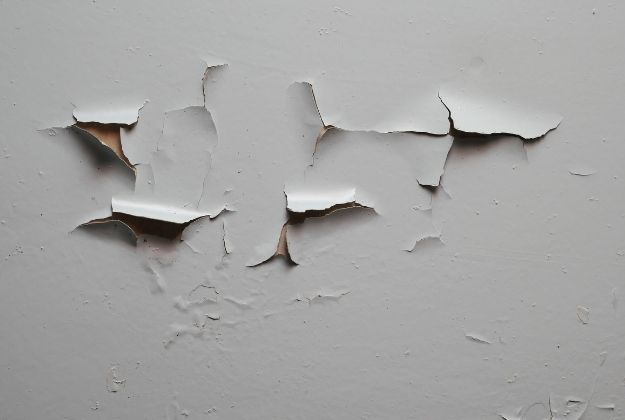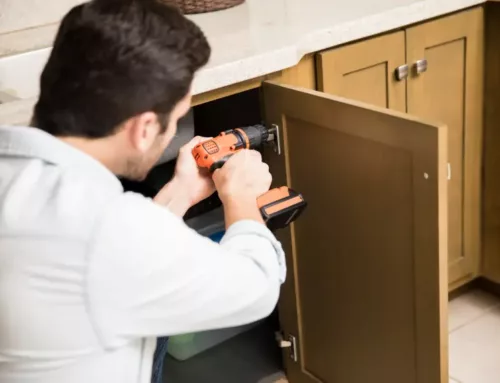
Before the health hazards of lead-based paint came to light, we used it on a variety of things. For centuries, lead paint was used to paint dishware, toys, and, of course, homes. Lead improved the appearance, durability, and drying time of paint, so it’s no wonder it was such a popular choice!
But in the late 1970s, healthcare professionals released numerous studies detailing how prolonged lead exposure impacts our health. Lead paint was promptly banned in the US for use in consumer goods and on residential homes. But even though you won’t find lead in modern products or homes, you can still find it in older products and homes.
Lead paint in the home can be especially dangerous if left unaddressed for too long. Want to know how to tell if your home’s paint contains lead? Here are three reliable methods for identifying lead paint and what to do if you discover it lurking in your home.
Determine the Age of Your House
If you’re worried about your home containing lead paint, the first thing you should do is determine when your home was built. Homes built before 1978 may contain traces of lead paint on the walls, doors, stairs, and baseboards, but if your home was built after 1978, it’s highly unlikely that it was painted with lead-based paint.
If your home was built before 1978, the next thing you should do is figure out if your home has ever been renovated. If your home has a modern, updated appearance, it’s possible that any traces of lead paint were dealt with during a prior renovation. If possible, try to contact the previous owners of the home to see if they tested for lead, and if they were given positive results, whether they had it professionally abated.
If you rent your home and suspect the presence of lead paint, contact your landlord. If your landlord brushes off your concerns or doesn’t respond to them in a timely manner, you can reach out to your local health department or municipality to request a lead test.
Do a Visual Inspection
If your home is on the older side and you’re not sure if lead concerns were addressed by the previous owners, there are a few other methods you can try to determine whether you have lead paint. One way to tell if your home’s paint contains lead is to perform a visual inspection on the walls, doors, stairs, and baseboards.
As it deteriorates, lead paint cracks in a unique fashion. Alligatoring is when paint cracks and wrinkles, and the cracks and wrinkles form a pattern reminiscent of gator scales. If you notice alligator cracks on the walls, there’s a good chance your paint contains lead. Lead paint also produces a chalky residue when it rubs off, which is another great way to identify it.
There’s just one problem with visual inspections. Most old homes have undergone at least one or two repaints since the 1970s. When a layer of lead paint is covered by multiple layers of non-lead paint, you won’t be able to notice these signs.
Fortunately, there’s a way to get around this. Most homeowners don’t bother to paint areas such as closets and unfinished basements. The areas behind big, heavy appliances like stoves or washers are also frequently neglected. That means you may be able to find the home’s original paint intact in these areas.
Have It Tested
If you find any visual signs of lead paint, you should have your paint tested as soon as possible. And even if you don’t notice any visual signs of lead, it doesn’t hurt to have your home checked. It’s better to be safe rather than sorry, as the old saying goes.
You have two options when it comes to lead paint testing: DIY and professional. DIY lead tests are inexpensive, easy to do, and surprisingly accurate, but they aren’t as accurate and as thorough as testing performed by a professional. A professional lead inspector will take material, paint, water, soil, and dust samples from your home and send them to a lab for testing. If any of the tests come back as positive, they’ll help you decide how to best handle the lead problem in your home.
How To Deal With Lead Paint
So, the lead test came back positive. What’s the next step you should take? If your lead paint is in good condition, you might not have to do anything right away. Lead paint itself isn’t much of a hazard, but when it deteriorates, small particles of lead are released into the air. If you swallow or breathe in these particles, they can cause health problems. But as long as your paint isn’t chipping, flaking, or peeling, you won’t have to worry about ingesting or breathing in these dangerous particles. Still, all lead paint will eventually deteriorate. It’s best to have the problem remedied sooner rather than later, so don’t wait too long to call a professional.
If your lead paint is damaged, you should reach out to a lead removal company as soon as possible. If, for some reason, you can’t get the lead removed immediately, there are measures you can take to reduce lead exposure in the meantime. Removing your shoes at the front door, regularly dusting and cleaning your home, and eating a healthy diet full of calcium, vitamin C, and iron will keep lead exposure and absorption to a minimum.
Once a professional lead abatement team arrives at your door, you can sit back and relax—they’ve got the rest handled. Fortunately, there are a variety of ways to safely and efficiently remove lead from a home. Professionals will choose an abatement method based on the extent of the problem and the specific areas affected.
Some common methods of lead removal include enclosure, where a covering is placed over the affected area, replacement, where tainted doors, windows, or moldings are removed and replaced. There is also the process of removal, where the lead paint is scraped away using scraper tools, and encapsulation, where the lead paint is sealed with a special coating.
If you’re looking for reliable lead paint contractors in Portland, Oregon, give JK Paint & Contracting a call! Our lead removal experts will use professional techniques to abate lead and make your home safe to live in again.





